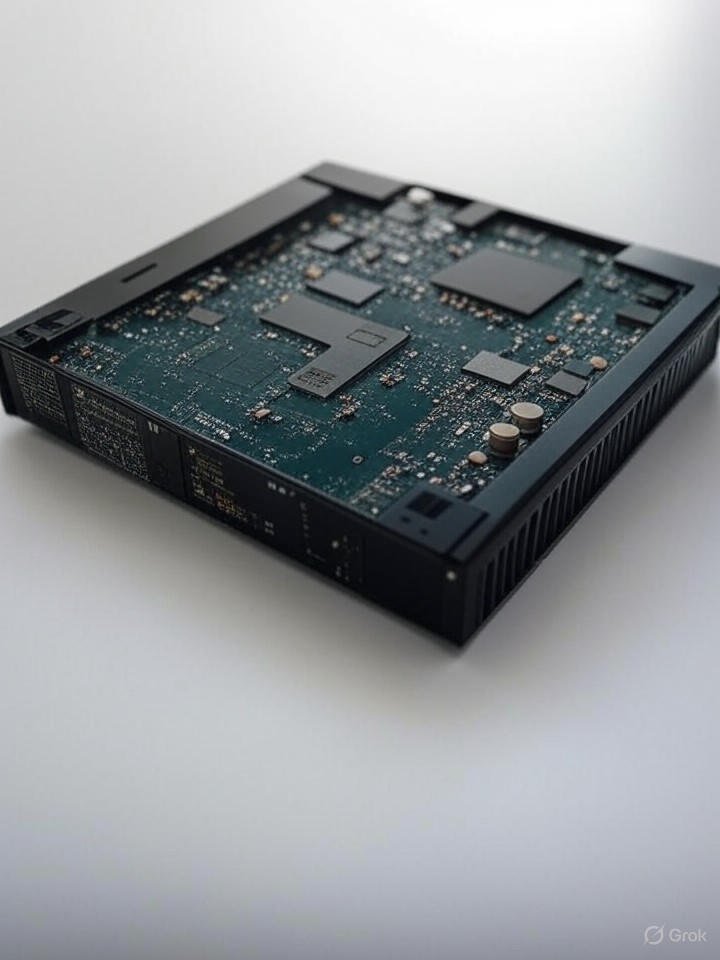Tools & Platforms
AI Is Becoming Private Equity’s New Playbook

Private equity isn’t just experimenting with AI. From sourcing targets to assessing risks, the technology is moving into the core workflow.
getty
At one of the world’s biggest private equity firms, the pace of work has shifted from weeks to hours. Analysts who once spent long nights parsing financials and industry filings now run the same diligence in a fraction of the time with the help of generative AI. Inside Carlyle Group, the tools have become part of daily life, touching everything from research to credit assessments.
“Ninety percent of our employees use tools like ChatGPT, Perplexity and Copilot,” said Lucia Soares, Carlyle’s chief innovation officer, in an interview with Business Insider. The change, she explained, means credit investors can “assess a company in hours” instead of weeks. In an industry where speed and accuracy define competitive advantage, that’s more than an efficiency play — it’s a fundamental rewiring of how private equity (PE) operates.
And Carlyle isn’t alone. A Bain & Company survey of firms managing $3.2 trillion found that while only a minority have scaled generative AI across portfolios, nearly 20% already report measurable value from deployments. Looking ahead, 93% expect material gains within three to five years. In other words, AI is moving from pilot projects to strategy and becoming the newest entry in private equity’s playbook.
Data-Driven Deal Origination
Deal origination has always been a search for signal amid noise. AI is making that search sharper. For Gelila Zenebe Bekele, founder of Aone Partners, the change has been transformational.
“When sourcing proprietary deals that are not on the market, you either rely on deep industry connections, what we call ‘river guides’ in the search fund ecosystem, or you capture digital signals to identify readiness to transact,” Bekele told me. “Two years ago, some M&A workflows would take a week to complete. Today, an in-house AI system can do it in an afternoon.”
Her vantage point is distinctive. The search fund model — conceived at Stanford GSB in 1984 — was built lean, enabling faster adoption of new tools. That structure has since grown into a robust ecosystem and, by Stanford’s analysis, generated more than $10 billion in value for investors. For Bekele, the lean model creates space to embed AI directly into workflows instead of layering it onto legacy systems.
The market is also industrializing these capabilities. Startups are racing to build connective tissue between unstructured information and investment decisions. One example is Metal, which recently raised $5 million to create an “operating system” for private markets, promising to boost inbound deal flow by as much as 300% without additional headcount.
Rethinking Due Diligence
If sourcing is about finding the right door, diligence is deciding whether to walk through it. Here, Bekele has built AI directly into the process.
“Has there ever been a more opportune moment to modernize operations with technology? In just the past two years, models like GPT, Gemini, and Claude have evolved from simple chat interfaces into agentic systems capable of executing multi-step processes with minimal human oversight.” She added: “And this is only the early innings. By 2030, OpenAI projects AI agents could be tackling problems as complex as drug discovery. Across a wide set of work tasks, generative AI can cut average completion times by more than 60 percent. For technical work, the savings can reach 70 percent.”
At Aone Partners, she has trained AI agents on her standard workflows to generate AI exposure and diligence reports. “The first step is assessing whether the company’s core intellectual property is truly defensible — whether it constitutes a moat that an AI-native startup could not easily replicate.” The second is identifying how data and AI become levers for value creation, from product differentiation to workforce augmentation.
This lens resonates across the industry. Carlyle’s Soares described a structured rollout that trains employees from day one, creates an AI champions’ council and layers proprietary datasets into generative AI — “saving investors from sifting through endless materials.”
The Implementation Questions
Momentum doesn’t erase the risks. For private equity firms, ensuring data security is paramount. “Any AI strategy must be built to ensure that this information remains protected,” Bekele said. Beyond security, she sees a practical challenge many managers share. “It seems to me that every fund manager I speak with is asking the same question — do you build, buy, or partner?”
The pace of technological change complicates that decision. “The reason so many are ‘piloting’ AI for M&A tools is because what feels cutting-edge today may be obsolete in twelve months. The systems I used a year ago don’t compare to what I run today. To me, the answer is building a workflow around the needs of the fund manager that can move in lockstep with the best large language models. If it can be built in-house, fantastic. If it’s a product, the question is whether it can evolve as quickly as the large LLMs themselves.”
Another constraint borders on data quality. PE analysis is nuanced, and generic models won’t suffice. Bain’s research notes that firms making progress are the ones putting in organizational support — standing up governance, prioritizing use cases and spreading learnings across portfolios — rather than experimenting in silos.
What Comes Next
The mood in the industry has changed from curiosity to strategy. Nearly two-thirds of private equity firms now consider AI implementation a top strategic priority, according to Private Equity International’s Advanced Technologies & AI Report.
For Bekele, the reason is simple. “The M&A workflow generates massive volumes of data each day—financial statements, contracts, CRM records, customer reviews and interview transcripts. AI expands the aperture, processing information at speed so investors can focus on what matters: generating insight and making decisions.”
That captures the wager many investors are making: Not that AI will replace human judgment, but that it will elevate it. And it could be the silent revolution happening in an industry known for its strict rules. The firms turning AI into processes, not just projects, will likely compound advantages across sourcing, diligence and portfolio operations. Given how quickly the toolset is evolving, the edge may belong to managers — large or lean — who are open to change and learn in public.
Tools & Platforms
AI Companions Revolutionize Elder Care, Battling Loneliness Worldwide

The Rise of AI in Elder Care
In an era where technology increasingly intersects with human well-being, artificial intelligence is emerging as a pivotal tool in addressing one of the most pressing challenges facing the elderly: loneliness. Senior living facilities across the United States are turning to AI-powered companions to provide emotional support and social interaction for residents who often feel isolated. These digital aides, ranging from voice-activated chatbots to robotic pets, are designed to engage users in meaningful conversations, remind them of daily tasks, and even monitor health metrics, all while offering a semblance of companionship without the need for constant human intervention.
Recent implementations highlight the potential of these technologies. For instance, a program in a Bronx senior living facility, as reported by CBS New York, has introduced AI companions that deliver empathy and conversation, helping residents combat feelings of solitude. Similarly, initiatives in states like New York and Pennsylvania have distributed robotic pets to isolated seniors, providing comfort and reducing loneliness, according to coverage from CNN posts on X.
Low-Tech Approaches Yield High Impact
Contrary to assumptions that cutting-edge AI requires sophisticated hardware, many effective solutions are surprisingly low-tech. A notable example comes from McKnight’s Senior Living, which details how simple voice-based AI companions are being deployed in senior residences. These systems operate via basic phone calls or smart speakers, engaging residents in casual chats about weather, news, or personal stories, thereby fostering a sense of connection without overwhelming users with complex interfaces.
This approach is particularly beneficial for seniors who may be intimidated by high-tech gadgets. Research from a systematic review published in PMC underscores the effectiveness of such AI applications in reducing loneliness among older adults, noting improvements in quality of life and mental health outcomes through regular, empathetic interactions.
Global Innovations and Local Adaptations
Beyond the U.S., international efforts are pushing boundaries. In South Korea, ChatGPT-powered Hyodol robots are assisting caregivers by providing companionship to seniors, as highlighted in a recent article from Rest of World. These robots not only converse but also help with medication reminders and vital sign monitoring, alleviating the burden on human staff in overburdened facilities.
Domestically, companies like ElliQ are leading the charge with AI care companion robots that promote independence and healthy living. According to their own site at ElliQ, these devices facilitate entertainment, family connections, and wellness goal tracking, proving especially valuable in combating isolation. Posts on X from users like Dynamic emphasize how such AI companions are tailored for elderly interactions, incorporating patience and generational knowledge to build rapport.
Challenges and Ethical Considerations
Despite the promise, integrating AI into elder care isn’t without hurdles. Concerns about dependency and the potential for these companions to exacerbate rather than alleviate loneliness have surfaced. A piece in WebProNews warns that romantic AI companions might foster unhealthy attachments, leading to lower self-esteem and anxiety among users who withdraw from real-world connections.
Privacy issues also loom large, with data collection for health monitoring raising ethical questions. Industry insiders, as discussed in a Forbes article, stress the need for robust safeguards to protect vulnerable seniors from exploitation while scaling support through predictive AI tools.
Future Prospects and Industry Shifts
Looking ahead, the integration of AI in senior living is poised for expansion. Innovations like the Joy Calls service from ONSCREEN, detailed in a PR Newswire release, offer free phone-based AI companionship to combat isolation in Southern California. This model could inspire widespread adoption, especially as staffing shortages persist in care facilities.
Experts predict that embodied AI, such as robots with physical presence, will become more prevalent, as noted in X discussions from susano. Combined with advancements in voice recognition and behavioral monitoring, these technologies could detect early signs of cognitive decline, as explored in posts by Joel Selanikio on X, potentially revolutionizing proactive care.
Balancing Technology with Human Touch
Ultimately, while AI companions offer scalable solutions, they are most effective when complementing, not replacing, human interaction. A WHYY segment points out that about one in four older adults report social isolation, and AI robots are helping, but experts caution against over-reliance. Programs encouraging real-life connections, like AI meet-up apps described in The Sun, bridge the gap by facilitating in-person events.
As the industry evolves, stakeholders must prioritize ethical deployment to ensure AI enhances rather than diminishes the human experience in elder care. With ongoing innovations, these digital allies could significantly improve the lives of millions, turning the tide against loneliness in an aging population.
Tools & Platforms
AI export rules tighten as the US opens global opportunities

The American AI Exports Program aims to boost small business innovation in AI while ensuring sensitive technologies do not fall into military or weapons use abroad.
President Trump has signed an Executive Order to promote American leadership in AI exports, marking a significant policy shift. The move creates new global opportunities for US businesses but also introduces stricter compliance responsibilities.
The order establishes the American AI Exports Program, overseen by the Department of Commerce, to develop and deploy ‘full-stack’ AI export packages.
These packages cover everything from chips and cloud infrastructure to AI models and cybersecurity safeguards. Industry consortia will be invited to submit proposals, outlining hardware origins, export targets, business models, and federal support requests.
A central element of the initiative is ensuring compliance with US export control regimes. Companies must align with the Export Control Reform Act and the Export Administration Regulations, with special attention to restrictions on advanced computing chips.
New guidance warns against potential violations linked to hardware and highlights red flags for illegal diversion of sensitive technology.
Commerce stresses that participation requires robust export compliance plans and rigorous end user screening.
Legal teams are urged to review policies on AI exports, as regulators focus on preventing misuse of advanced computing systems in military or weapons programmes abroad.
Would you like to learn more about AI, tech and digital diplomacy? If so, ask our Diplo chatbot!
Tools & Platforms
Arm Launches Lumex Subsystem for 5x Faster On-Device AI in Smartphones

In the rapidly evolving world of mobile computing, Arm Holdings has unveiled its latest innovation, the Lumex Compute Subsystem (CSS), a platform designed to supercharge on-device artificial intelligence capabilities in smartphones, wearables, and other consumer devices. Announced on September 10, 2025, this new architecture promises to deliver unprecedented performance gains, enabling AI tasks to run locally without relying on cloud servers. By integrating advanced CPUs, GPUs, and system interconnects optimized for AI workloads, Lumex addresses the growing demand for privacy-focused, real-time intelligence in everyday gadgets.
At the heart of Lumex are SME2-enabled Armv9.3 cores, which support scalable matrix extensions crucial for handling complex AI models. These cores, paired with the new Mali G1-Ultra GPU, offer up to 5x faster AI processing compared to previous generations, according to details shared in Arm’s official newsroom announcement. The platform also incorporates a redesigned System Interconnect and System Memory Management Unit, reducing latency by as much as 75% to ensure smoother operation of AI-driven features like real-time language translation or augmented reality overlays.
Architectural Innovations Driving Efficiency
Beyond raw power, Lumex emphasizes energy efficiency, a critical factor for battery-constrained mobile devices. The subsystem’s channelized architecture prioritizes quality-of-service for AI traffic, allowing developers to run larger models on-device without excessive power draw. As reported by The Register, this design represents Arm’s strategic pivot toward CPU-based AI acceleration, distinguishing it from competitors who lean heavily on dedicated neural processing units.
Industry analysts note that Lumex’s four tailored variants, built on advanced 3nm processes, cater to a range of devices from flagship smartphones to smartwatches. This flexibility could accelerate adoption by chipmakers like Qualcomm and MediaTek, who license Arm’s designs. Posts on X from tech enthusiasts, including those highlighting Arm’s collaboration with frameworks like KleidiAI, underscore the platform’s developer-friendly tools that integrate seamlessly with major operating systems, enabling apps to leverage on-device AI from launch.
Implications for AI in Consumer Tech
The push for on-device AI aligns with broader industry trends toward data privacy and reduced latency. Unlike cloud-dependent systems, Lumex allows for “smarter, faster, more personal AI,” as described in Reuters, potentially transforming user experiences in gaming and real-time analytics. For instance, the platform’s double-digit IPC gains—estimated at 20% performance uplift with 9% better efficiency—could enable immersive graphics in mobile games while processing AI tasks like object recognition in the background.
However, challenges remain. Integrating such advanced hardware requires ecosystem support, and Arm has been proactive, working with developers to optimize frameworks for these optimizations. Recent news from HotHardware emphasizes how Lumex’s GPU enhancements, including ray tracing support, position it as a boon for flagship devices, potentially appearing in next year’s smartphones.
Market Impact and Future Outlook
Arm’s dominance in mobile chip design—powering over 95% of smartphones—gives Lumex a strong foothold. According to Silicon Republic, this launch comes amid intensifying competition from rivals like Apple and Google, who are also advancing on-device AI. X discussions, such as those from Arm’s own account, highlight up to 5x AI speedups, fueling speculation about its role in emerging tech like AI agents in wearables.
Looking ahead, Lumex could reshape how AI integrates into daily life, from personalized assistants to secure edge computing. Yet, as Liliputing points out, success hinges on software ecosystems catching up. With Arm betting big on this platform, it may well define the next era of mobile innovation, balancing power, efficiency, and accessibility for billions of users worldwide.
-

 Business2 weeks ago
Business2 weeks agoThe Guardian view on Trump and the Fed: independence is no substitute for accountability | Editorial
-
Tools & Platforms4 weeks ago
Building Trust in Military AI Starts with Opening the Black Box – War on the Rocks
-

 Ethics & Policy1 month ago
Ethics & Policy1 month agoSDAIA Supports Saudi Arabia’s Leadership in Shaping Global AI Ethics, Policy, and Research – وكالة الأنباء السعودية
-

 Events & Conferences4 months ago
Events & Conferences4 months agoJourney to 1000 models: Scaling Instagram’s recommendation system
-

 Jobs & Careers2 months ago
Jobs & Careers2 months agoMumbai-based Perplexity Alternative Has 60k+ Users Without Funding
-

 Education2 months ago
Education2 months agoVEX Robotics launches AI-powered classroom robotics system
-

 Podcasts & Talks2 months ago
Podcasts & Talks2 months agoHappy 4th of July! 🎆 Made with Veo 3 in Gemini
-

 Education2 months ago
Education2 months agoMacron says UK and France have duty to tackle illegal migration ‘with humanity, solidarity and firmness’ – UK politics live | Politics
-

 Funding & Business2 months ago
Funding & Business2 months agoKayak and Expedia race to build AI travel agents that turn social posts into itineraries
-

 Podcasts & Talks2 months ago
Podcasts & Talks2 months agoOpenAI 🤝 @teamganassi





















